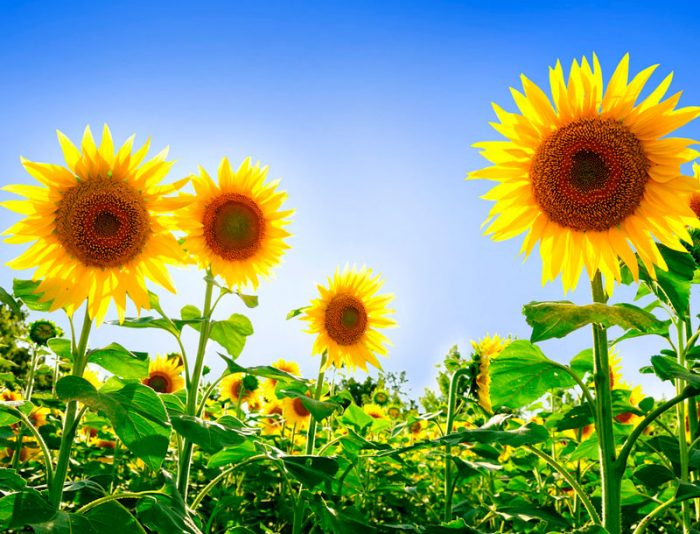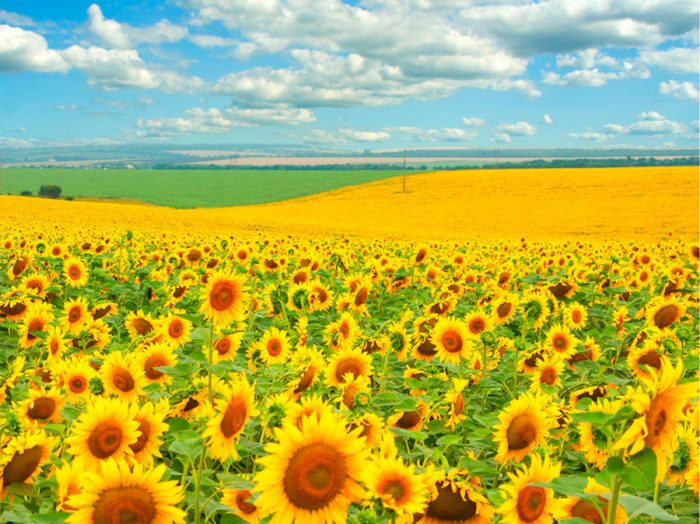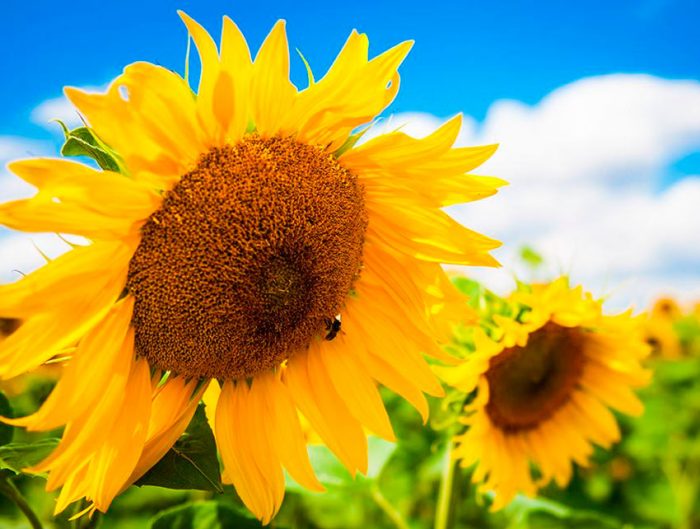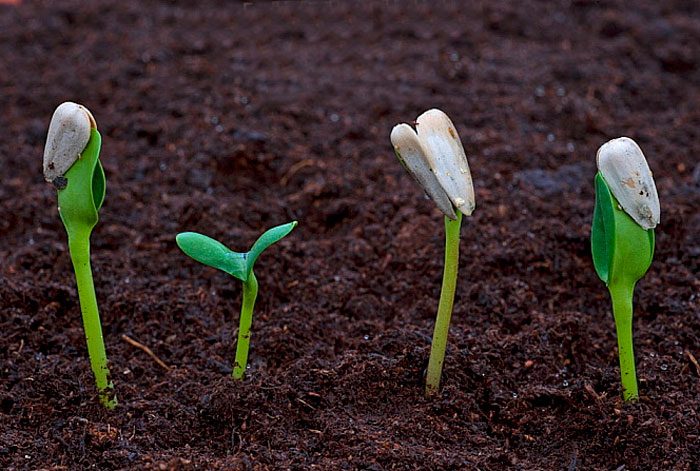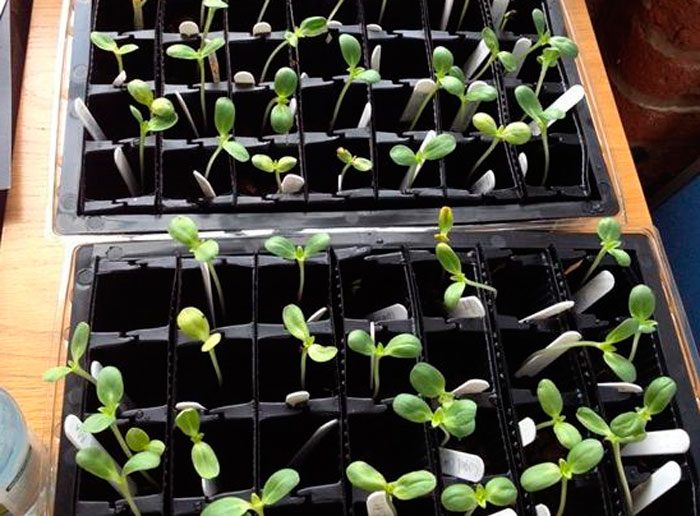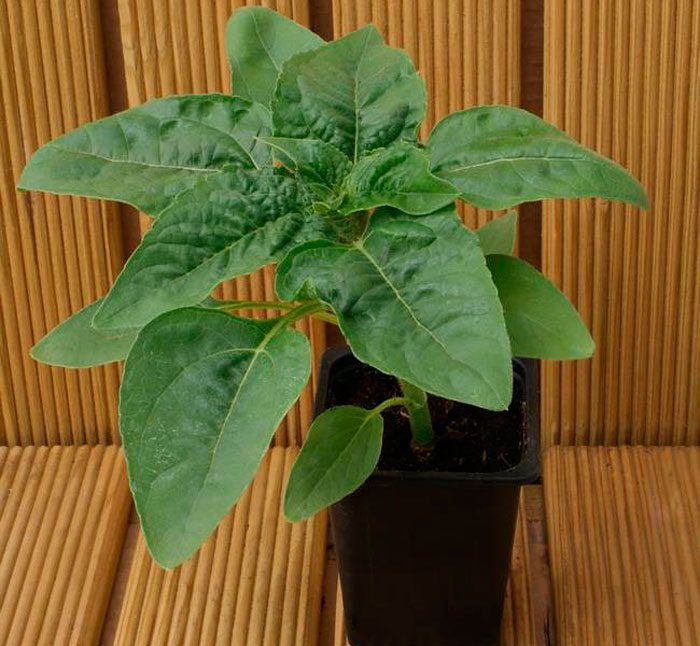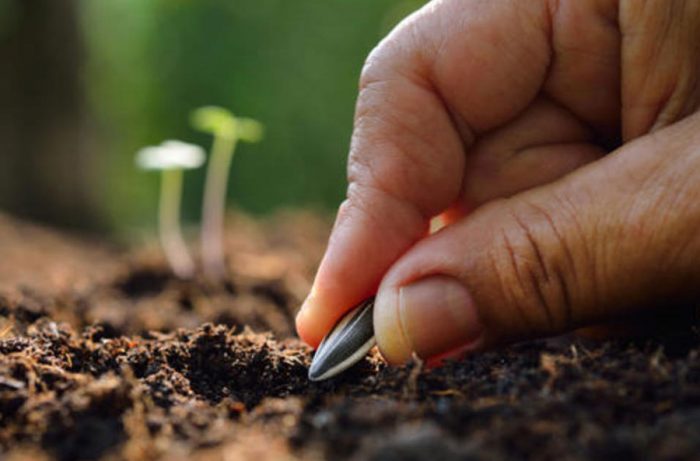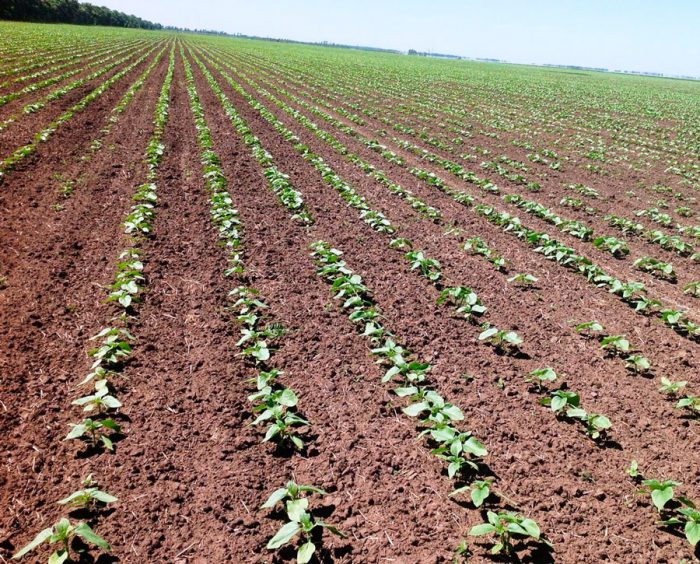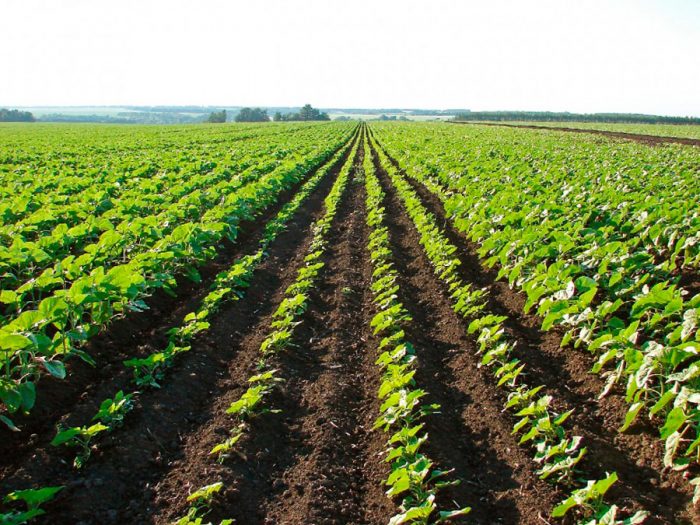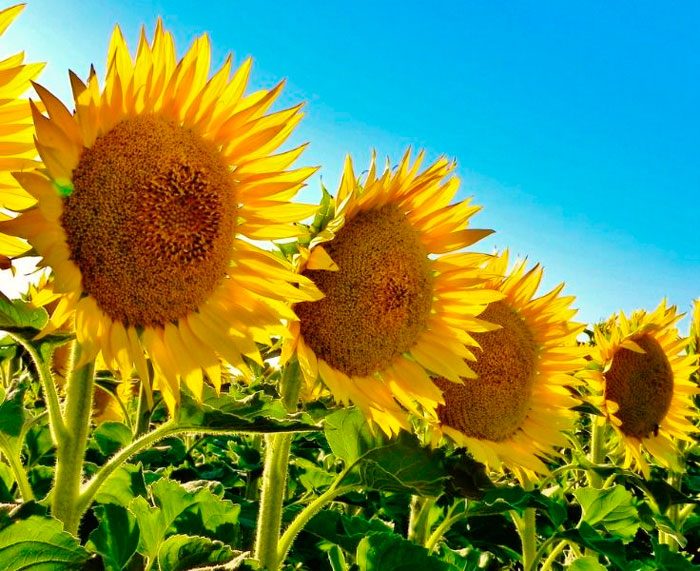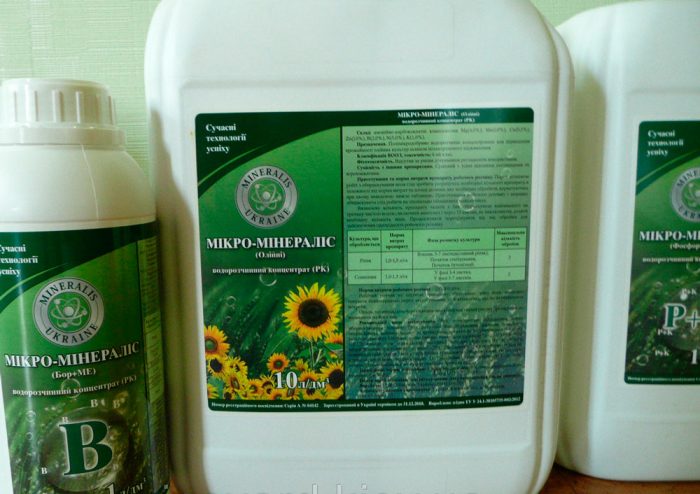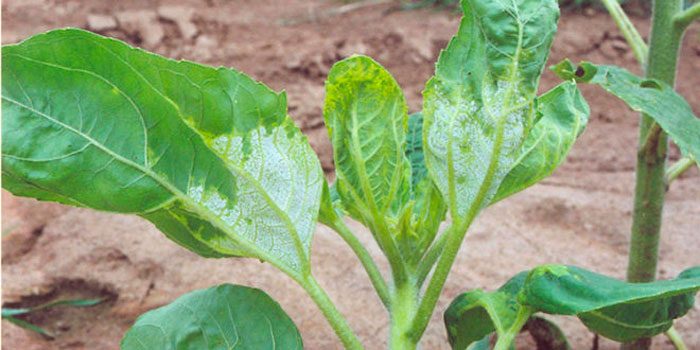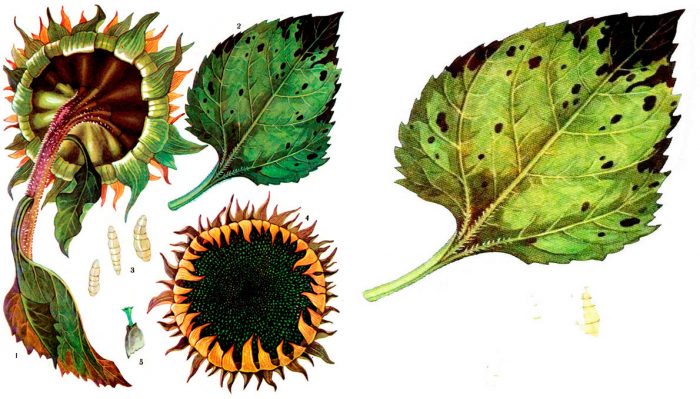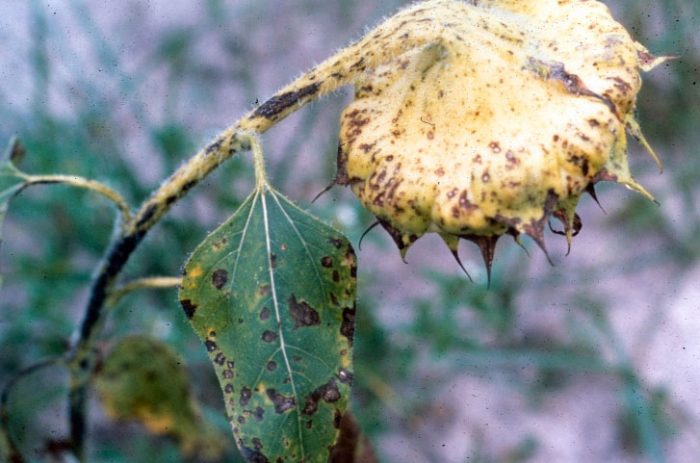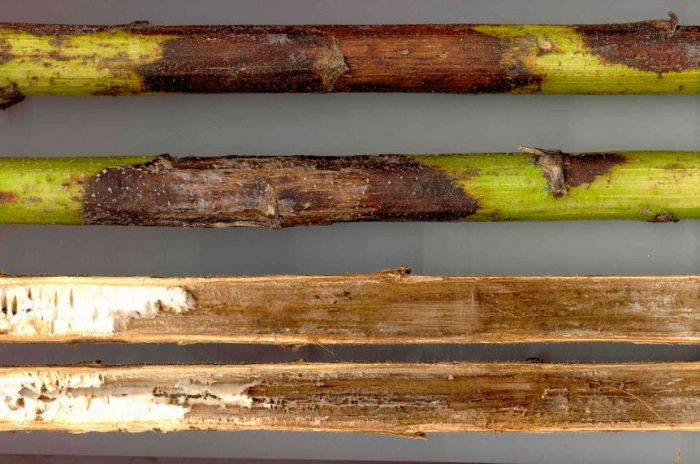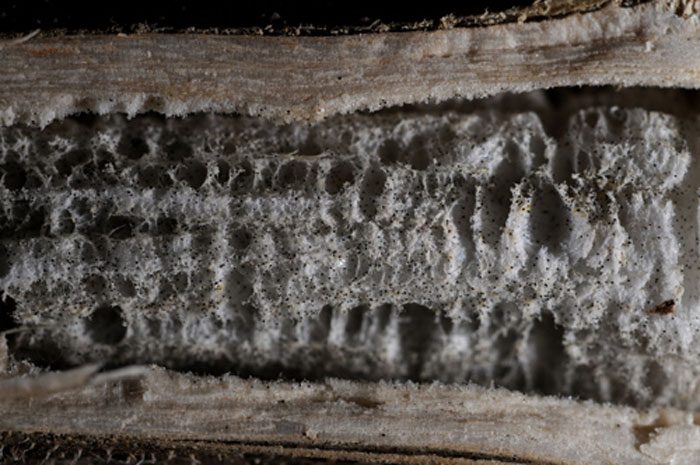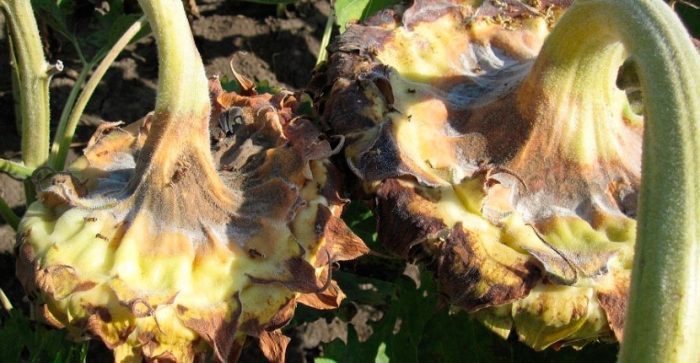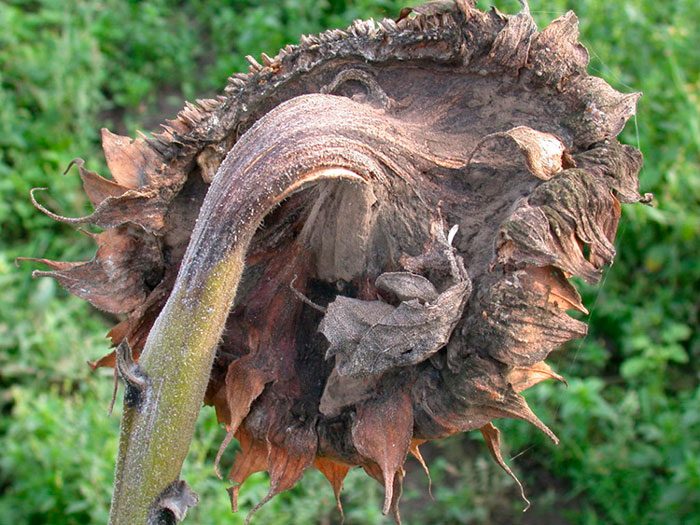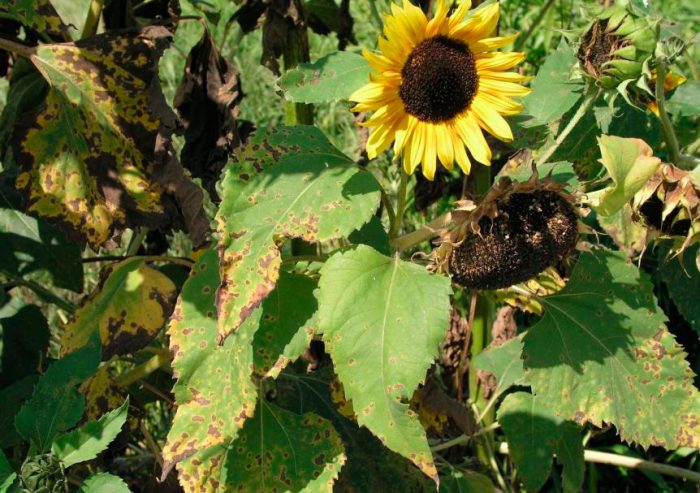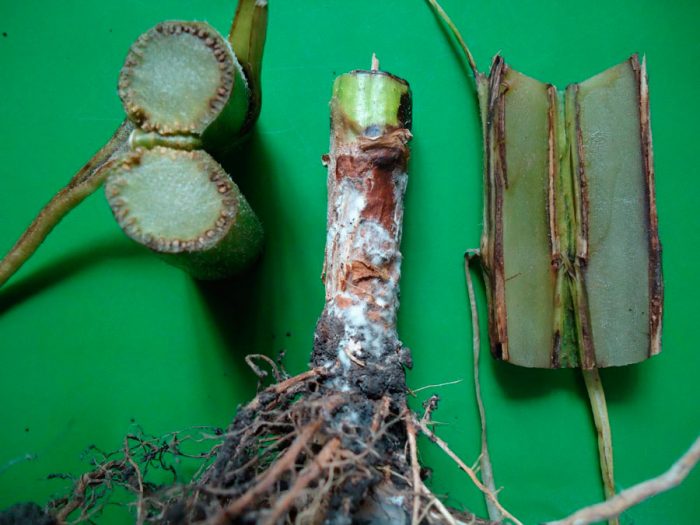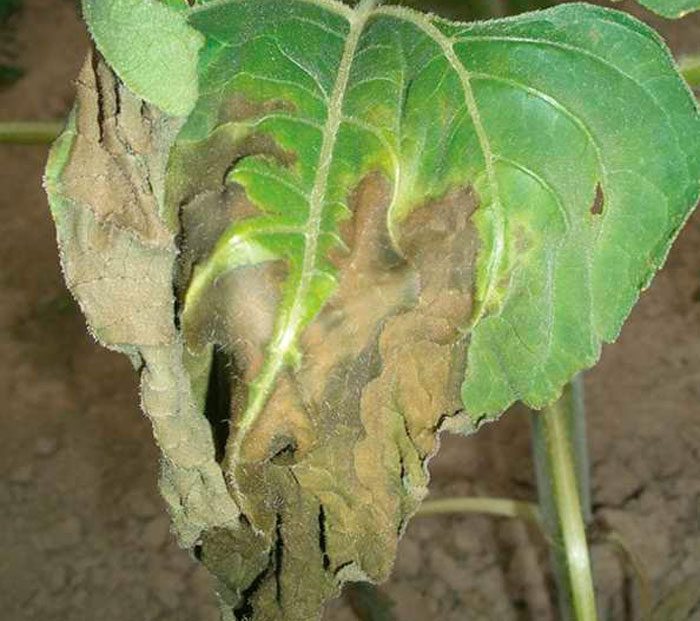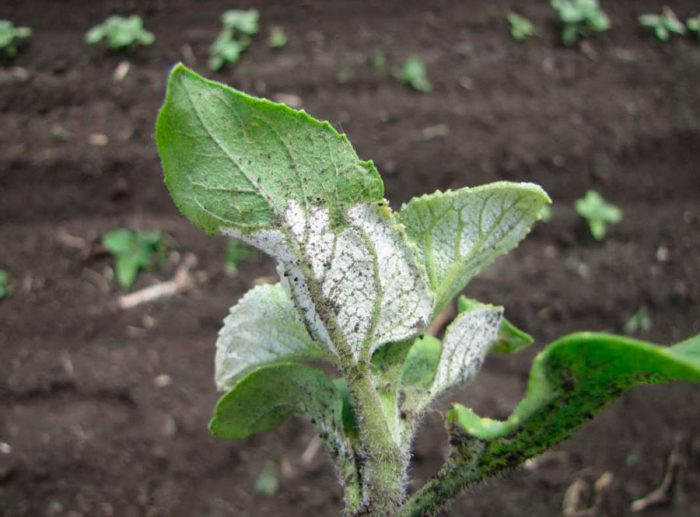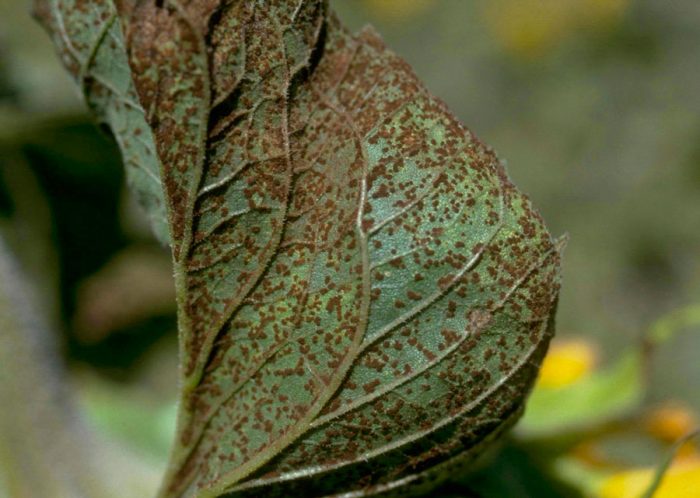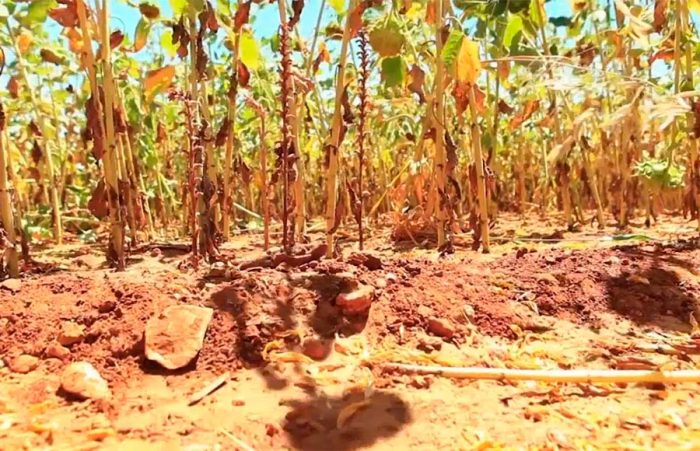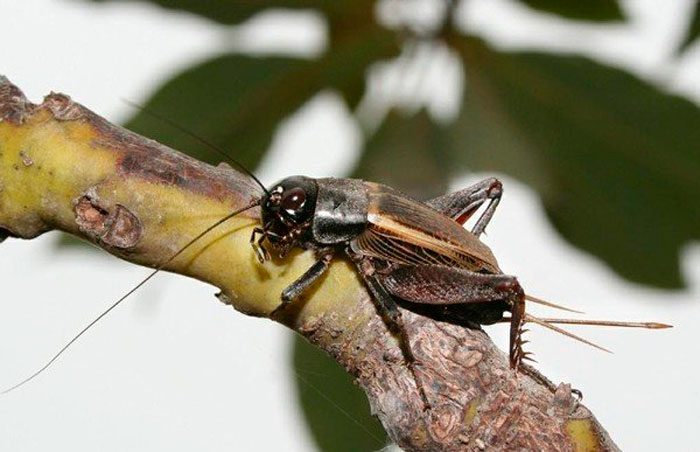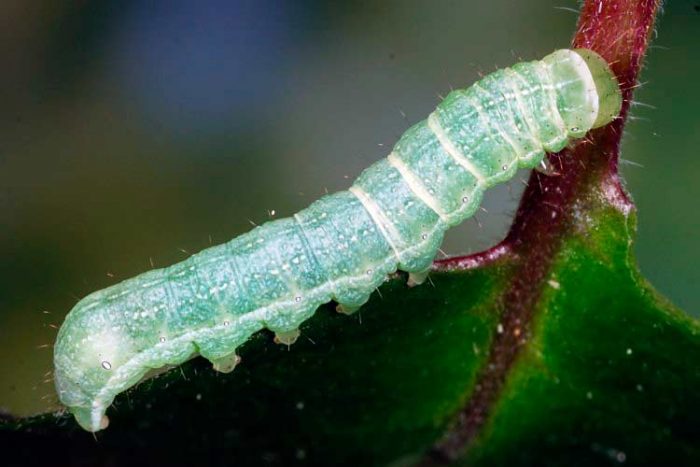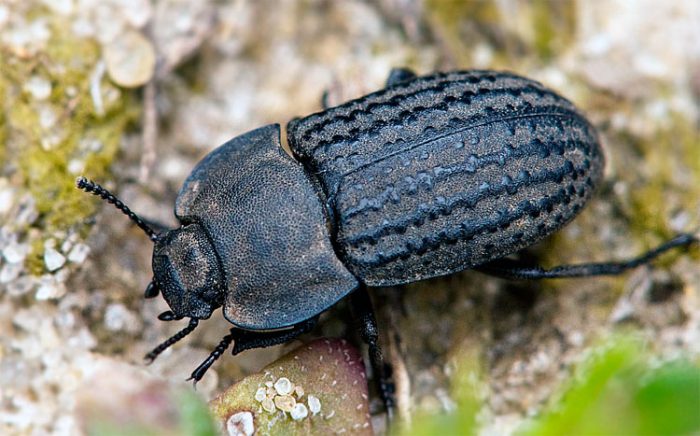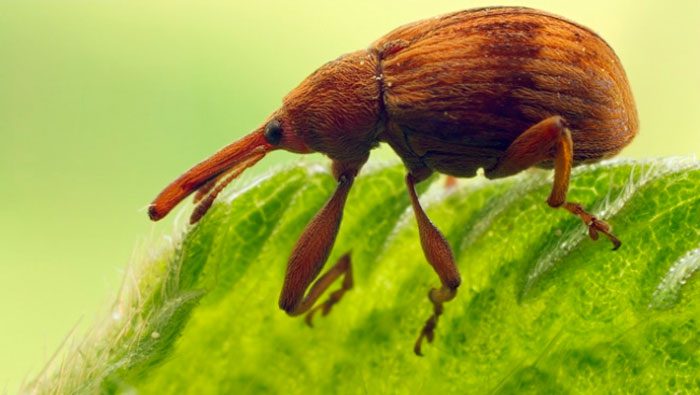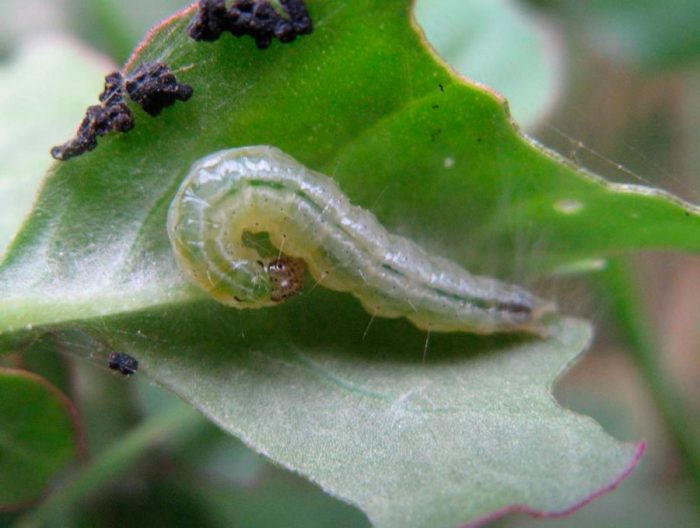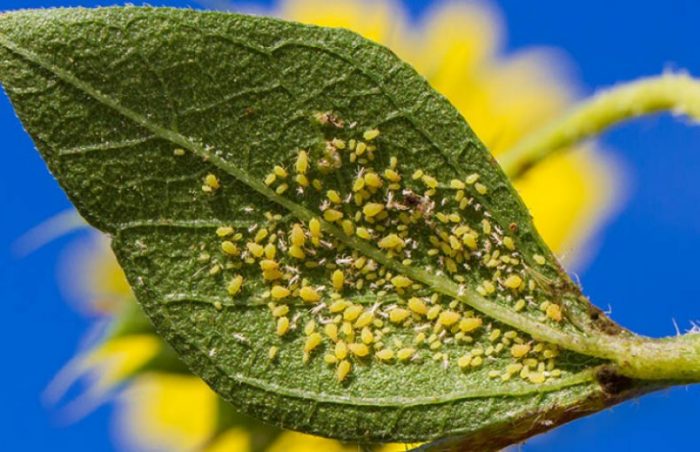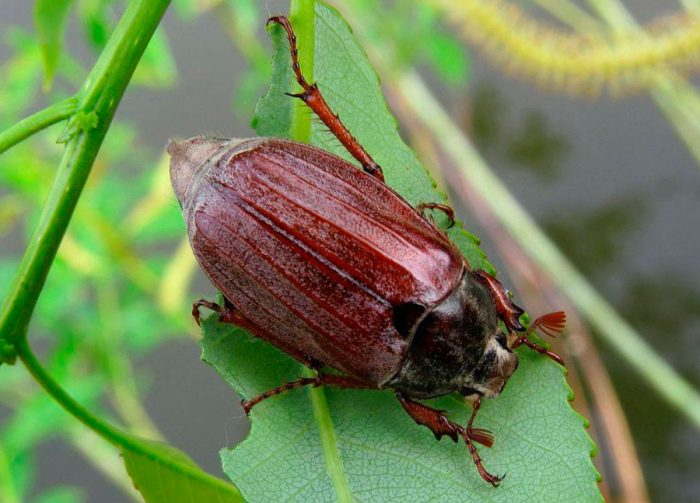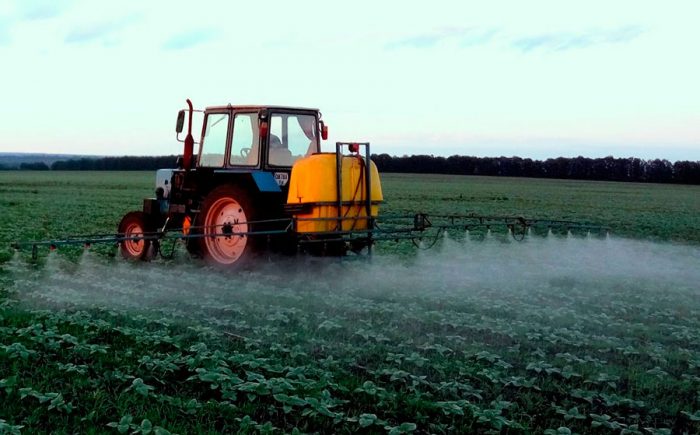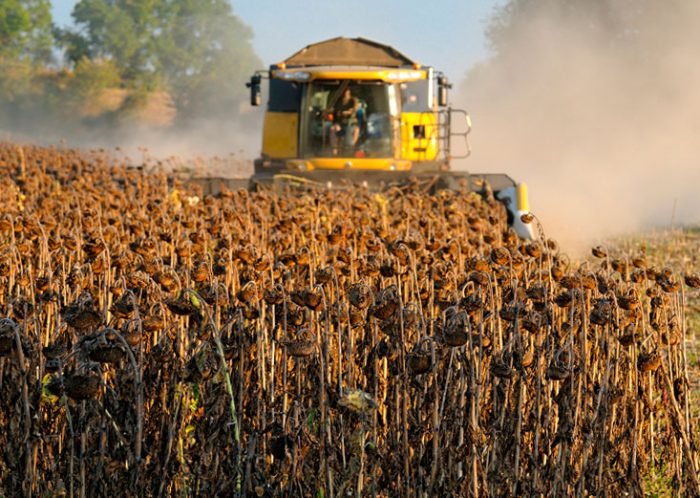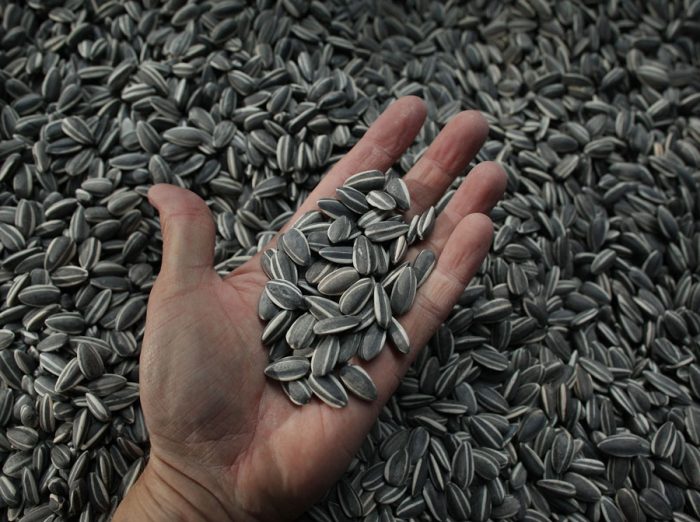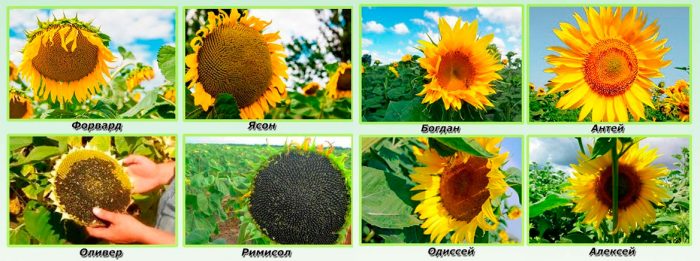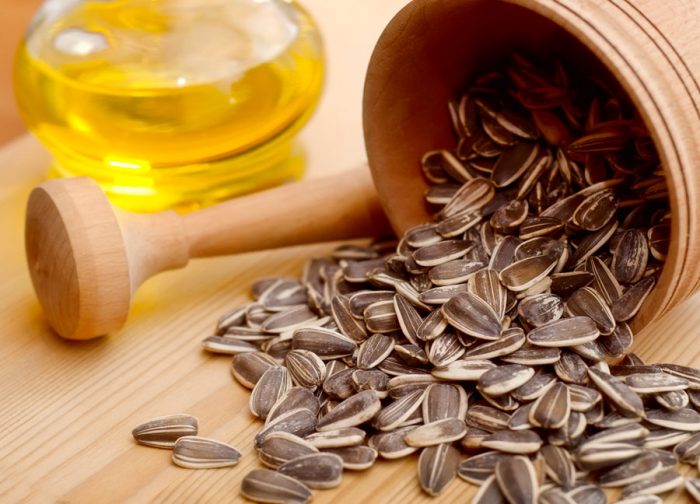The sunflower plant (Helianthus) is a genus of the Asteraceae family. This genus unites about 50 species. Under natural conditions, such a plant can be found in Central and North America, as well as in Peru. Even the Indians began to cultivate sunflower, they used it in the treatment of fever, and in order to relieve chest pains, also such a plant was used to make bread, and from its petals and pollen they made raw materials for purple-purple paint, with the help of it the aborigines they got tattoos on their bodies. The oil extracted from such a plant was used to lubricate the hair, while the flowers were used as ornaments for temples and altars. Some of the species, which were decorative and oil-bearing plants, came to Spain at 16, after which they were brought to Italy and France. By the end of 16, they were already cultivated in Switzerland, Holland, Belgium, Germany and England. On the territory of Russia, this culture spread only when it was recognized by the Orthodox Church as a lean food. Today, such a plant is considered a very valuable agricultural crop, and it is grown in almost all countries.
Content
Brief description of cultivation
- Landing... Sowing seeds in open soil is carried out in the last days of April or the first of May after the soil at a depth of 10 centimeters warms up to 8-12 degrees.
- Illumination... The plot must be open and sunny.
- Priming... Can be anything except marshy, sour and salty. It grows best in nutritious soil, which includes clay.
- Watering... Water it abundantly and often. Most of all, such a plant needs moisture before it grows 4 pairs of true leaf plates, and then during the period of bud formation, flowering, and even seed filling.On hot days, it is necessary to water the sunflower daily, and during a prolonged drought, watering is carried out 2 or 3 times a day.
- Fertilizer... It is necessary to feed it systematically throughout the growing season, while you can use both mineral fertilizers and organic matter. The method of introducing the main elements is root, and with the help of foliar feeding, the bush is supplied with microelements.
- Reproduction... By seeds: through seedlings and in a seedless way.
- Harmful insects... Steppe crickets, weevils, gnawing scoops, sandy slugs, meadow moths, wireworms, May beetles and their larvae, herbivorous bugs, aphids.
- Diseases... Peronosporosis (downy mildew), embellisia (black spot), phomopsis (gray spot), stem phomosis, coal (ash) rot, dry rot, verticillium wilt, gray rot, alternaria (brown spot) (asclerochillosis), sclerochilosis , powdery mildew, rust, broomrape, bacteriosis, viral mosaic and greening of flowers.
Features of sunflower
The sunflower oilseed plant (Helianthus annuus) is an annual. The height of the bush is about 250 cm, it has a rod system of roots, which penetrates into the ground to a depth of 200 to 300 cm. The non-branching erect stem has a soft and elastic core, there are hard hairs on its surface. The upper leaf plates are sessile, alternately located, and the lower ones are oppositely located long-petiolate. Their shape is oval-heart-shaped with a pointed apex, their edge is serrated, and on the surface there is pubescence, represented by a hard pile. The length of the leaves is about 0.4 m. The flowers collected in very large baskets are surrounded by wrapping leaves. The peculiarity of the sunflower is that its buds and young baskets are able to turn after the sun, while during the day they change their orientation from east to west. However, as the bush grows and matures, the position of the basket is fixed, however, the foliage continues to turn behind the sun. The length of the marginal ligulate flowers is 40–70 mm, they are sterile. There are a lot of inner flowers and they are bisexual tubular. As a rule, only 1 inflorescence grows in oilseeds, but in some cases additional shoots with small baskets are formed. Flowering lasts about 4 weeks and is observed in July – August. Cross pollination by insects and wind. The fruits are slightly compressed elongated achenes with weakly pronounced edges, their length is 0.8–1.5 cm, and their width is 0.4–0.8 cm. The leathery pericarp is covered with a husk (skin) of white, black, gray or striped color. Inside each seed is a white core covered with a seed coat. Such a plant is considered an excellent honey plant.
Growing sunflower seeds
Sowing
It is not recommended to grow sunflower seedlings in seedlings, since the seedlings that have appeared in the ground can withstand not very large frosts. However, if it is simply necessary to grow seedlings of such a plant, then it should be remembered that the sowing of seeds is carried out 20-25 days before the plants are transplanted into open soil. For sowing, use individual containers (for example, cut plastic bottles or pots), the height of which should be from 28 to 30 centimeters, while at their bottom there must be holes for drainage. Fill the containers with nutrient soil mixed with humus, while the substrate must be always moist. It is necessary to plant 1–2 seeds in each container, burying them into the substrate by 30–40 mm, do not forget to compact the soil mixture well, because the seed should be embraced by it from all sides. The containers are covered with foil on top and transferred to a warm place.
Growing sunflower seedlings
After the seedlings appear, the containers will need to be transferred to a well-lit place. It is very simple to care for the seedlings, for this they need to be watered in a timely manner, carefully loosen the surface of the substrate and systematically ventilated. When about 7 days remain before transplanting into open soil, the seedlings will need to be hardened, for this they are taken outside daily, while the duration of the procedure should be increased gradually.
Picking
Due to the fact that such a plant tolerates transplants very painfully, it is not recommended to dive seedlings. Planting seedlings in open soil is carried out in the first days of June, together with a lump of earth by the transshipment method. When planting a plant, you must adhere to the following scheme: 100x100 centimeters. The planting must be done very carefully in order to avoid injury to the plant root system.
Sowing sunflower in open ground
What time to plant
Sowing sunflower seeds in open soil is carried out in the last days of April or the first days of May, while the soil should warm up to 8-12 degrees. This plant is distinguished by its unpretentiousness to growing conditions, for example, seedlings are able to withstand frosts up to minus 5 degrees, and they are also not afraid of drought. But there are several rules that you must pay attention to:
- sunflower cannot be grown on the same plot for several years in a row, it is imperative to take breaks of 3-4 years;
- poor predecessors of such a crop are beets, tomatoes and legumes;
- the best predecessors of sunflower: grains and corn;
- when planting such a culture, it must be borne in mind that not a single plant can grow and develop normally in the diameter of its root system.
Suitable soil
Such a culture grows best in nutritious soil, while there must be some clay in the root system, and moisture must be under it. Such a plant is distinguished by its ability to adapt to other types of soil, both heavy and light. However, it must be remembered that swampy, acidic or saline soils should not be chosen for growing sunflower.
Before proceeding with sowing, the site must be prepared. For this, all weeds are removed from it and dug up, while introducing complex mineral fertilizer into the soil. Some gardeners are sure that it is not necessary to apply fertilizer to the soil immediately before sowing this crop, they believe that if other plants grow well in this soil, then sunflower can be successfully grown in it.
Sowing rules
Before proceeding with sowing, the seed must be calibrated, and then it is pickled, for this it is immersed in a solution of potassium manganese (1%) for 14 hours, or it is immersed in an onion-garlic infusion overnight. To prepare it, you need to combine onion husks with 100 grams of chopped garlic and a couple of liters of freshly boiled water. After 24 hours, strain the infusion through cheesecloth. Such an infusion will be able not only to exterminate all pathogenic microorganisms, but at first it will also scare away rodents and harmful insects from the seed.
Sowing seeds is carried out in moistened soil, deepening them into it by 80 mm, while 2 or 3 pieces must be placed in one nest. When planting tall varieties between bushes, a distance of about 100 centimeters must be observed, and between medium-sized varieties, the distance should be about 60 centimeters. The smaller the distance between the bushes, the smaller the seeds of the new crop will be and vice versa.
What to plant after sunflower
Sunflower greatly depletes the soil, therefore it is recommended to grow legumes after it (beans, vetch, soybeans, peas and lupines), and vegetable plants are not suitable for this. Thanks to legumes, the soil will be able to rest, and it will be saturated with nitrogen.After the legumes next year, cucumbers can be planted on this site.
Sunflower care
In order for the sunflower seeds to be large, such a plant will need to be properly cared for. To do this, it must be systematically watered, weeded, loosened the soil surface around the bushes and between the rows, fed, and also protected, if necessary, from harmful insects and diseases.
How to water
Watering should be done when needed. Most of all, the bushes need moisture before the formation of four pairs of true leaf plates, as well as during the growth of inflorescences, as well as during flowering and seed filling. When watering, it is necessary to take into account both the frequency of such a procedure and the abundance. Water should saturate the soil to the depth of the root system of the bushes. In summer, during the hot period, watering should be daily. And during a prolonged drought, watering must be carried out twice or three times a day. The fact is that this culture is hygrophilous.
Top dressing of sunflower
Since this plant needs a large amount of nutrients, then after the formation of the third pair of real leaf plates, it needs to be fed, for this, superphosphate is used (for 1 square meter of the plot from 20 to 40 grams), dry fertilizer is scattered over the soil surface. Then, the granules are embedded in the ground to a depth of about 10 centimeters, then it is necessary to water the site.
After the formation of the baskets is over, the bushes need to be fed with potassium-nitrogen fertilizer, for this use a solution consisting of 1 large spoonful of potassium sulfate and 10 liters of mullein solution (1:10). Re-feeding with the same fertilizer is carried out during seed ripening.
In some cases, blistering curvatures form on the foliage, cracks appear on the surface of the stem, and the stem itself becomes very fragile. These symptoms indicate that there is not enough boron in the soil. In this case, the bushes are sprayed on the foliage with a product containing boron in its composition.
Diseases and pests of sunflower
Sunflower diseases with photos and names
If the sunflower is improperly looked after, and also not adhered to the rules of agricultural technology of this crop, then this can lead to the plant becoming ill.
Peronosporosis, or downy mildew
Downy mildew (peronosporosis) is a fungal disease, its causative agent is the Plasmopara mushroom. The affected bush looks underdeveloped, its stems become thinner and become very fragile, while the leaf plates look chlorotic and shrink, and a white bloom forms on their seamy surface. However, there is also such a form of the disease, with the defeat of which there is a shortening and thickening of the stem. During one season, a sunflower that has practically completed its development can become infected with downy mildew again. In this case, oily spots are formed on the leaf plates of the affected bush, the shape of which is irregular, a whitish bloom appears on the seamy surface, while the shoots change their color to greenish. After that, the disease also affects the basket, the development of which stops.
Embellisia, or black spot
Black spot (embellisia) is a very dangerous disease that can affect both a cultivated plant and a weed, which is highly resistant to many diseases. The first symptoms of the disease can be seen during the formation of the fifth or sixth true leaf plate on the bush. On the foliage, necrotic specks of dark color are formed, ranging in size from 0.3 to 0.5 cm, as the disease progresses, they grow and merge with each other, as a result of which spots are formed from 40 to 50 mm in size, having a yellow border.On the surface of the petioles, elongated spots of an irregularly shaped dark color are formed, while in the place where the leaf petiole is attached to the stem, many cracks appear, while on the shoot itself near the petiole, black necrosis is observed. In diseased bushes, dark brown spots are also formed on the surface of the baskets.
Phomopsis, or gray spot
Gray spot (phomopsis) is a very dangerous fungal disease, and it affects all parts of the bush. On the surface of the foliage, an angular form of necrosis of a dark brown color is formed, as from a burn, drying out and death of foliage and petioles is still observed. On the surface of the stem around the infected petiole, brown necrosis with a clear outline appear, over time they turn gray, and pycnidia form on their surface. Shoots become very fragile and relatively easily injured. The disease develops most actively in warm weather with high humidity.
Stem phomosis
The causative agent of stem phomosis is a fungus. The first symptoms of such a disease can be seen in young bushes during the formation of 6-8 true leaf plates. On the foliage, brown spots with a rich yellow bordering are formed, as the disease develops, they become larger, as a result, they cover the entire leaf plate and even its petiole. After this, the tissue of the shoot is damaged. If the bush is struck during the flowering period, then after a short time, irregular brown specks will appear on its basket, the development of seeds deteriorates, they grow half-empty, and then change their color to brown.
Coal, or ash rot
Ash or coal rot is a fungal disease that also affects potatoes, beets and corn. Initially, the disease affects the root collar and eventually moves up the shoot, while the flow of nutrients through it is blocked, which causes wilting and drying of the foliage and the upper part of the bush, this can lead to the death of the sunflower. The disease develops most actively during a long dry and hot period.
Dry rot
Dry rot is widespread and is caused by fungus. In the affected bush on the front side of the basket, rotten specks of a dark brown color appear, over time, they dry out and harden. If the plant is very badly affected, then the seed cells begin to easily move away from the base in layers. Seeds grow underdeveloped, flat and stuck together, they taste bitter. Most often, the development of the disease is observed during an extended dry period and after the bushes are injured by hail.
Gray rot
Gray rot is also a fungal disease, its pathogens can live for a long time in the soil, on the root system, on sowing material, as well as in plant residues that remain after harvest. The disease develops most intensively in damp cool weather. On young bushes, specks of brown color are formed, on the surface of which, after a short time, a bloom of a pale gray color forms. At the same time, streaks of dark color appear on the surface of the shoots, and the same plaque forms on them. Also, a defeat is observed in the maturing baskets, which is why oily specks form on their seamy surface, in these areas the tissue becomes soft, plaque appears on them, and then their rotting and dying off is observed. If the conditions for the development of the fungus are favorable, then this will negatively affect the crop yield.
Verticillus wilt
Verticillium wilt can cause sunflower tissue to gradually fade, and this can eventually lead to the death of the plant.This fungal disease contributes to damage to the vascular system of the bush. The first symptoms of the disease can be detected during the flowering of the bush, after which this disease affects the foliage, they lose turgor between the veins, then they shrivel, and their death is observed. However, infected and dead leaves can remain on the branches for a long time. The disease also affects the vessels of the stem, which leads to a deterioration in the condition of the generative organs. So, if you cut off the stem of a diseased bush, it will become noticeable that the pulp has changed its color to brown. The disease spreads most intensively during a long dry and hot period.
Alternaria, or brown spot
Brown spot, or Alternaria is also a fungal disease that leads to damage to stems, seeds and foliage. Initially, brown necrotic points appear on the surface of the leaf plates; over time, their increase is observed, while their shape becomes irregular. In some cases, signs of such a disease can only be detected at the end of the growing season. The development of Alternaria occurs most intensively in the heat with high air humidity.
Sclerotiniasis, or white rot
White rot, or sclerotiniasis, can affect sunflowers throughout the growing season, but the first symptoms of such a disease may be different. A characteristic feature of white rot is its very rapid development. Seedlings infected with such rot die immediately. In young bushes with developed five or six leaf plates at an air temperature of 16 to 18 degrees and with increased air humidity, a white felt bloom appears on the surface of the foliage. Over time, the dying off of the affected tissues is observed, the stems break, which leads to the death of the bushes. Wet specks of brownish color are formed on the seamy side of the basket, the fabric under them becomes soft. Due to the fact that the plant has a root lesion with such a disease, the amount of nutrients entering the shoots and foliage noticeably decreases, which also becomes the reason for the imminent death of the bush.
Ascochitosis
The manifestation of the first symptoms of ascochitis can be observed throughout the entire growing season, however, the most striking signs of sunflower damage appear from the middle to the end of the summer period. On shoots, foliage and baskets, almost black spots appear, the shape of which can be irregular or round, in diameter they reach 10–20 mm. After a while, pycnidia form in the middle of the spots. This disease is also fungal.
Powdery mildew
Powdery mildew is widespread in the southern regions. Initially, a powdery white bloom forms on the foliage, over time it changes its color to a darker one, and then it completely becomes a brown dense film. The active development of the disease has an extremely negative effect on the yield of sunflower, while the amount of oil in the seeds is significantly reduced.
Rust
A fungal disease such as rust is widespread where sunflower is cultivated. In spring, on the seamy side, and in some cases on the front surface of the leaf plates, convex, orange-colored, pillow-shaped formations appear, which are called pustules, when they crack, a rusty powder pours out of them, which is a spore of a fungus. Rust affects foliage, as a result, it dies, but if the infection is very strong, then other parts of the bush may also suffer. Sick plants gradually lose moisture, their metabolic processes are disturbed, and they also lag behind in development.
Bunny
The broomstick is a single-stemmed parasite whose flowers are pale purple in color and the fruits are box-shaped.The sprout of such a parasite is attached to the root of the sunflower and is embedded in it. He lives off the sunflower, which has an extremely negative effect on his yield.
Bacteriosis
Bacteriosis is a bacterial disease. Diseased tissues rot and become slimy, wither and dry out.
Mosaic
The causative agent of the mosaic is the tobacco curly streak virus. In the affected bush, leaf plates change, they acquire a variegated color, then deformation and lagging in growth and development are observed.
Greening flowers
When the flowers turn green in diseased bushes, leaf chlorosis, the formation of thin secondary stems, dwarfism and sterility of flowers, which turn green, are observed. The causative agents of the disease are mycoplasma bodies carried by leafhoppers.
Sunflower pests with photos and names
Harmful insects can also settle on sunflowers, for example:
Steppe crickets
Adults injure the bush during the formation of the first true leaf plates, they destroy the growth point. Most individuals are concentrated at the edges of the site.
Gnawing scoops
For sunflower, the first generation of scoops is dangerous: caterpillars that live in the ground gnaw the stem in the area of the root collar.
Sandy slows
These pests are beetles that gnaw and eat seedlings.
Weevils
The most dangerous species are considered: gray, southern gray and gray beet. Such pests eat the cotyledonous leaf plates, gnaw the stems, while they injure the sprouts even when they are underground.
Meadow moths
Such pests are gluttonous and omnivorous, their larvae eat up the leaf plate completely, while only large veins remain of it, and they also destroy the epidermis on baskets and shoots.
Herbivorous bugs
They feed on plant sap, sucking it out of the tissues of the bush. If achenes are affected by pests, then this becomes the cause of their death.
Aphid
It affects young leaf plates, which causes them to wrinkle, yellow, and then they turn brown. If aphids live on a bush, then there is a lag in development.
Wireworms
They are the larvae of the click beetle. They gnaw the sown seeds, eat the sprouts that have appeared, and also gnaw the seedlings underground. This insect can harm a sunflower only until two or three pairs of true leaf plates are formed near the bush.
Chafer
The larvae of such a pest in the soil injure various crops, including sunflower. At the beginning of their development, they eat the roots of various plants.
Sunflower processing
In order to prevent pests from settling on the sunflower and to protect it from various diseases, a number of preventive measures must be taken:
- strictly adhere to the rules of crop rotation;
- grow only those varieties that are resistant to pests and diseases;
- sowing material needs mandatory pre-sowing preparation, it is treated with a solution of an insecticidal or fungicidal preparation;
- after harvesting, the site must be cleared of plant residues;
- in the autumn, the site needs to be plowed deeply or dug up.
If during the growing season symptoms of a fungal disease are found on the bushes, then they must be treated with a solution of a fungicidal drug of systemic action, for example, Kruiser or Apron. When 4 weeks remain before harvest, all treatments should be stopped. Viral diseases cannot be cured; therefore, bushes diseased with mosaics must be dug up and destroyed.
To protect the sunflower from harmful insects, the seed must be treated with an insecticidal preparation before sowing.In this case, the seedlings will be protected from pests for 5-7 weeks. However, after this time, experts advise to carry out systematic preventive treatment of the bushes with a solution of acaricidal or insecticidal preparation of a wide spectrum of action, for example, Akarin, Agravertin, Zalp or Aktellik. The most dangerous are bugs and aphids, which are sucking pests. The fact is that they not only harm the bushes by sucking juice out of them, but are also considered the main carriers of dangerous viral diseases, which today are incurable.
Sunflower harvesting and storage
Basic rules for harvesting
Sunflower harvesting is carried out during its full maturity. At this time, the foliage and baskets should dry out and turn brown. The fact is that during this period the process of accumulation of oil in the seeds is completed, their kernels harden, the peel turns into a color characteristic of this variety. If you squeeze a ripe seed from the sides with your teeth, the husk will split. After the area of plants with yellow reed flowers is no more than 15 percent, you can begin to harvest. However, in some cases, the ripening of seeds occurs during the rainy season, and then the drying of the baskets on the root occurs more slowly. And seeds with high humidity are not suitable for long-term storage. That is why, in these cases, before the rainy season begins, sunflowers are sprayed with desiccants in dry weather, which accelerate the ripening process (seeds in baskets ripen 7 days earlier). Thanks to this measure, it is possible to achieve an increase in yield, an increase in the quality of seeds, as well as a decrease in their moisture content to 9 percent or even less. However, in this case, it is necessary to harvest the crop in 6 days, otherwise the seeds will shatter.
During the harvest, the heads are cut 20-30 mm lower along the stem, after which the seeds are extracted from them using friction, and then the debris is blown away. You do not have to cut off the heads, but by tilting them over the container, knock on them from the back with something heavy, which will knock the seeds out of the basket. Well-ripe seeds will themselves fall out of the nests into the container. There is another way of harvesting, thanks to which it will be possible to collect all the seeds without loss, for this the heads must be cut off with 10 centimeters of the stem after only 2/3 of the seeds are ripe. Then on the baskets should be put on bags of paper or cloth, after which they are hung from the ceiling in the room for 15-20 days. Then it will be possible to quickly and easily hull the seeds from the nests, since they will mature and dry by this time. After harvesting, the stems on the site are pulled out and destroyed, then they are plowed or dug to the depth of a shovel bayonet.
Storage methods
It is from the integrity of the shells of seeds that their keeping quality depends. The fact is that seeds with an injured peel are deprived of protection against the penetration of pathogenic microorganisms and therefore deteriorate quickly enough. If the seeds contain organic impurities, then they will also not be stored for too long. The fact is that such impurities, in comparison with the seeds themselves, are characterized by increased hygroscopicity.
When preparing for long-term storage, all rubbish is removed from the seeds, and then they are winnowed, as a result, their moisture content should be no more than 7 percent, and even before laying them, they must be cooled to 10 degrees. To dry the seeds, they are placed in a dry, well-ventilated area. In the event that the moisture content of the seeds is more than 12 percent, experts recommend increasing ventilation during drying. Well-dried seeds can be stored for up to 6 months. They are poured into cloth bags, which are hung from the ceiling in a dry, unheated and clean room.
Types and varieties of sunflower
Sunflower husk classification is used commercially only. For example, varieties with black husks are oilseeds, since the seeds contain up to 50 percent oil, while varieties with striped husks are used in the production of food, for example, confectionery. Oil varieties are divided into polyunsaturated, monounsaturated and medium oleic, which depends on the quality and quantity of acids that make up the seeds. Also, hybrids and varieties according to the duration of the growing season are divided into early, medium-early, medium and medium-late.
The best varieties of such a culture include the following:
- Suite... This early ripe confectionery variety is distinguished by high yield, large-fruited, and also resistance to weed grass, drought and frost. The height of the bush is about 1.85 m, the diameter of the baskets reaches from 25 to 27 centimeters. Large kernels do not adhere very tightly to the walls of the achenes.
- Nut... It is an early versatile variety with high yields and resistance to some harmful insects and diseases, as well as weeds and weather conditions. The height of the bush is about 1.7 m, large black seeds of an oblong-oval shape on the surface of the husk have longitudinal stripes of dark gray color.
- Gourmet... The medium-ripening universal large-fruited variety has a high yield and resistance to some diseases and harmful insects, as well as to drought and weeds. The height of the bush is about 2 meters, in a lowered convex basket there are elongated large seeds.
- Oliver... This early maturing Serbian oil hybrid is highly productive and resistant to drought and disease. A non-branched bush with a powerful root system, reaches a height of about 1.45 meters. Flat baskets, as well as dark ovoid seeds, are of medium size.
- Forward... The mid-early oil hybrid has a high yield and resistance to sclerotinia, peronospora, various rot, phomopsis and weed grass. The height of the bush is about 1.9 m. The convex baskets that are lowered down reach 15 to 20 centimeters in diameter, the color of the seeds is dark striped.
- Rimisol... The mid-early oil hybrid is resistant to lodging, as well as to some insects and diseases. The height of the bush is about 1.6 m, the densely leafy stem is relatively thick, and the root system is well developed. Convex tilted baskets in diameter reach about 22 centimeters, they contain elongated black seeds.
- Flagship... This early buttery variety is fruitful and resistant to weeds and powdery mildew, but it is affected by Phomopsis. The height of the bush is about 200 cm, the seeds have an elongated oval shape.
- Prometheus... This ultra-early oily variety is high yielding and is resistant to weeds, drought, powdery mildew and rust. The height of the bush is about 1.4 m, while the heads in diameter reach from 18 to 22 centimeters.
- Attila... This oily, very early, highly productive variety is resistant to adverse conditions and most fungal diseases. The height of the bush is up to 1.65 m, flat, half-inclined heads reach about 24 centimeters in diameter.
- Vranac... Medium late confectionery hybrid has a high yield and resistance to drought, disease, shedding and lodging. On powerful and tall bushes, medium-sized, very convex baskets, wrapped downwards, grow. Dark gray stripes are located along the edges of large black seeds, broadly ovate.
- Diamond... This productive early confectionery variety is relatively resistant to drought, lodging and fungal diseases. The height of the bush is about 1.9 m, in large inclined convex baskets there are large black seeds with gray stripes.
- Zaporozhye confectionery... The medium-ripening high-yielding variety is resistant to shedding, weeds, downy mildew and verticillosis. The height of the bush is about 2.1 m, slightly convex or flat baskets in diameter reach from 20 to 25 centimeters.
Sunflower properties: harm and benefit
Useful properties of sunflower
Sunflower seeds contain the following substances:
- Carotene... It neutralizes the harmful effects of free radicals, thereby strengthening the body's immunity.
- Betaine... It activates lipid metabolism, helps normalize stomach acidity and energy production, and also prevents fat deposition and improves the functioning of the digestive system.
- Choline... Helps reduce cholesterol, assimilate fats, stimulate the heart, strengthen the central nervous system and slow down aging.
- Resin... They have bacteriostatic, antibacterial, antihelminthic and astringent effects.
- Fixed oils... They participate in the regenerative processes of tissues, contribute to the elimination of foci of inflammation, accelerate wound healing and ensure the body's defense against the action of carcinogens.
- Flavonoids... They help to improve elasticity and strengthen vascular walls and capillaries, lower blood pressure and neutralize the effects of free radicals.
- Organic acids... They help to strengthen the body's immune forces, increase appetite, activate metabolism, as well as normalize digestion and eliminate toxic substances.
- Tannins... They are distinguished by bacteriostatic, antibacterial and astringent effects.
- Glycosides... They have a calming, vasodilating, antimicrobial, diuretic, expectorant and disinfectant effect.
- Anthocyanins... They help to reduce the fragility of blood vessels and capillaries, stop bleeding, normalize metabolic processes, relieve inflammation, slow down aging processes, strengthen the heart, and also normalize the activity of the central nervous system.
- Bitterness... They help stimulate appetite, strengthen the immune system, normalize digestion, and also restore the body in case of fatigue, loss of strength, weakness, exhaustion or neurasthenia.
- Phytin... It helps to reduce cholesterol levels, activate fat metabolism, stimulate liver activity and normalize the state of the nervous system.
- Lecithin... It helps to activate fat metabolism, normalize the activity of the cardiac and vascular system, accelerate oxidative processes, improve brain function and stimulate bile secretion.
- Pectin... Promotes the elimination of salts of heavy metals and radionuclides, as well as suppression of putrefactive flora in the intestines.
- Saponins... Promote the removal of mucus from the lungs and bronchi, thinning phlegm and preventing DNA synthesis in tumor cells.
In addition to these substances, the seeds contain carbohydrates, proteins, vitamins, zinc and calcium.
Contraindications
The seeds of such a plant can cause certain harm to human health. For example, the strong husk that covers the seeds can injure the enamel of the teeth. Grains have a high calorie content, in this regard, they cannot be eaten in large quantities by those who want to get rid of extra pounds. In addition, as a rule, fried sunflower seeds are used for food, and they do not contain practically any useful substances. Also, eating seeds has a negative effect on voice data: in this case, a greasy film appears in the throat, which interferes not only with singing, but also speaking. As you know, sunflower has powerful long roots capable of absorbing both useful and harmful substances (poisons and toxins). In this regard, when purchasing seeds for food, you need to make sure that the sunflower was grown in an ecologically safe area, and before frying the seeds, dirt and dust were removed from them.

